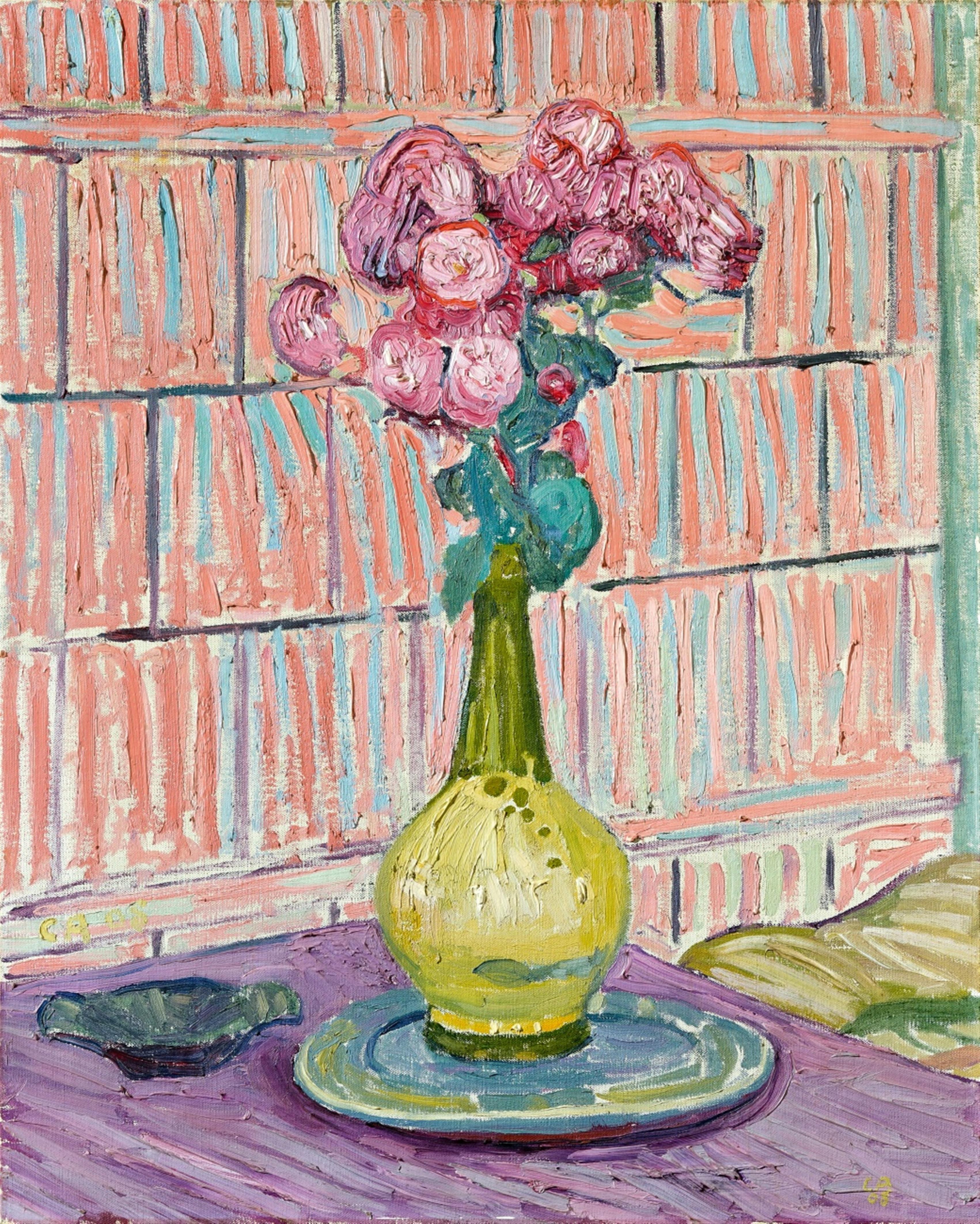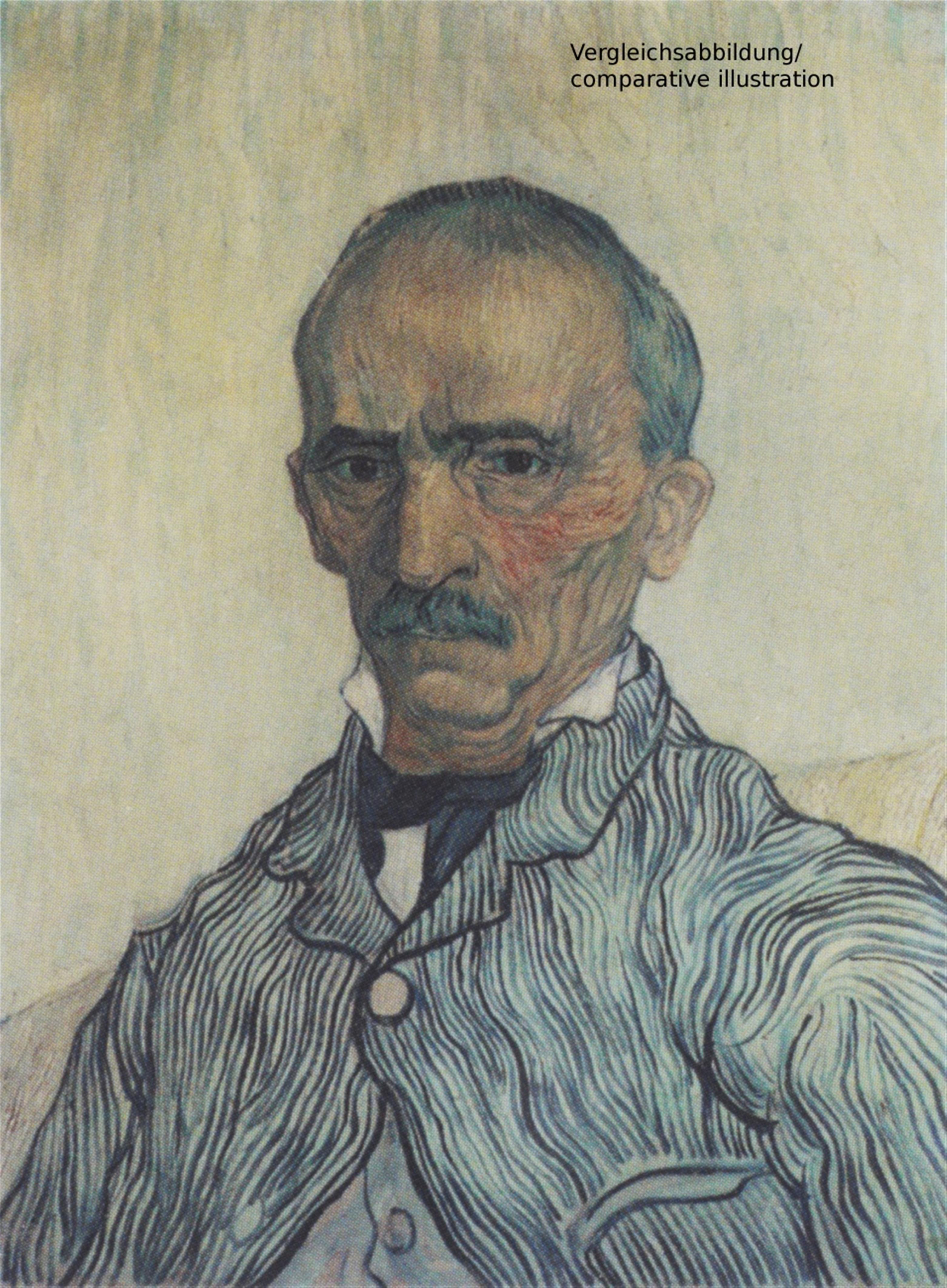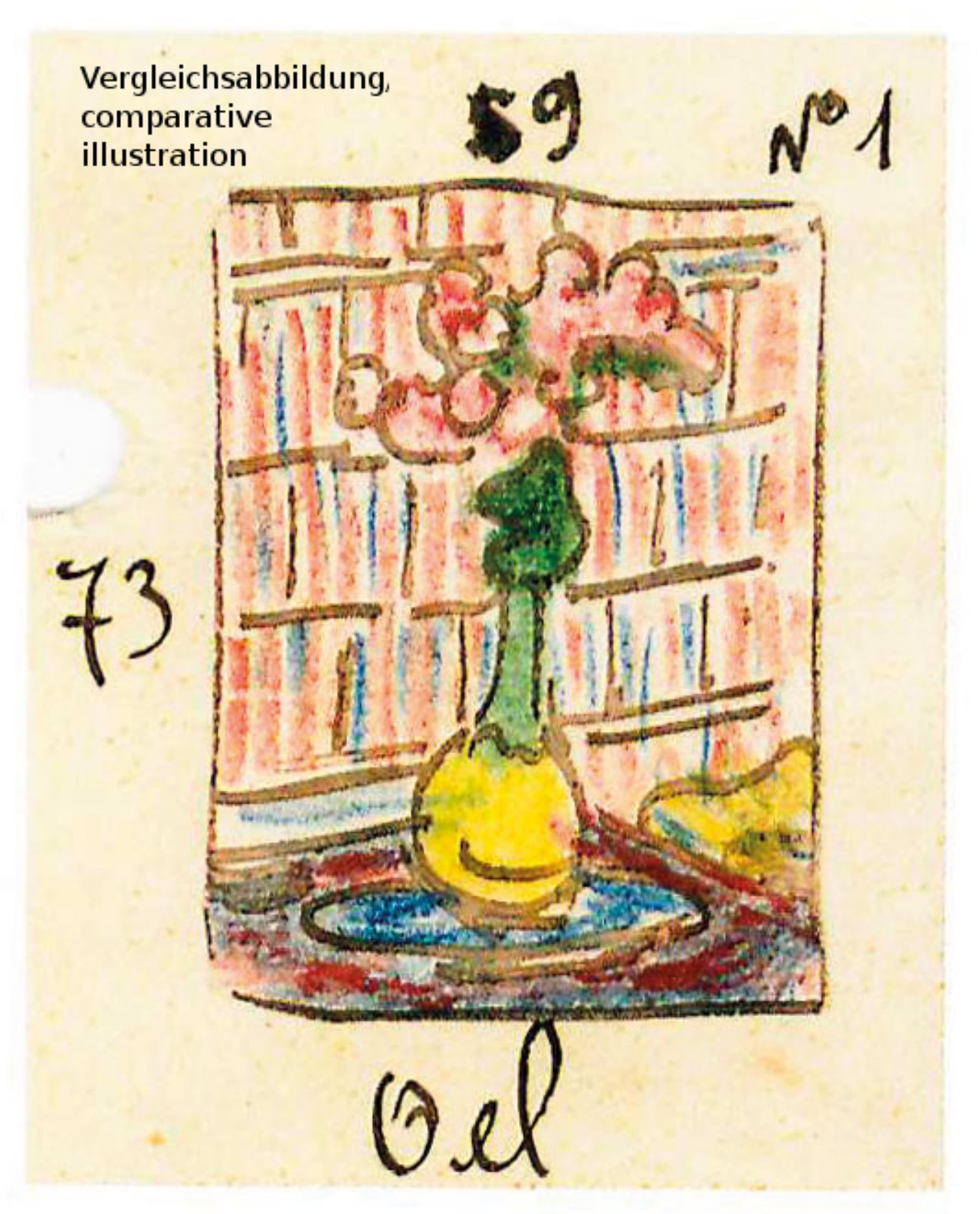Cuno Amiet
Blumenstillleben
1908
Oil on canvas 73.3 x 59 cm Originally framed. Barely legibly monogrammed and dated in yellow lower left within the depiction and additionally monogrammed and dated 'CA 08' in yellow lower right.
Cuno Amiet's stylistic pluralism was already admired and criticised by his contemporaries. The “Blumenstillleben” offered for sale here can be situated most readily between the works of Giovanni Giacometti and Ferdinand Hodler - Amiet had been a very close friend of the former since 1887 and he met the latter in 1893, at the general congress of Swiss artists. At that point in time, Amiet had already studied at Munich's Kunstakademie and then at the Académie Julian in Paris, and these studies were followed by an extended stay in Pont-Aven. Amiet met Giovanni Segantini, whose work he also greatly admired, in 1896. In 1905 the artists of Dresden's “Brücke” group of painters invited him to become a member, and in 1911 he became familiar with the “Blauer Reiter” in Munich.
Divisionism, Cloisonnism and Symbolism were the stylistic tendencies of the hour, and the artist effortlessly made his way among them. In 1908, the year the “Blumenstillleben” was created, Amiet's works were exhibited together with those of Giovanni Giacometti and Vincent van Gogh at Zurich's Künstlerhaus. In addition, Gertrud Müller from Solothurn lent the two friends van Gogh's famous painting “The Chief Orderly of the Asylum, Portrait of Trabu”, so that they could study it (see comparative illus.). Amiet's occupation with van Gogh's painting had a direct stylistic effect on his work at this time. However, just as our “Blumenstillleben” adheres to the boldly coloured divisionist expressiveness of van Gogh's late work and also conveys a hint of Hodler's Symbolism, it would surely be inappropriate to ignore the relevance of Amiet's domestic situation for the history of the work's creation. In that same year the artist had a new house built for himself, which was indebted to Jugendstil, and our still life was apparently also already created in it.
The flowers and vase are set off to great effect in front of the pink and light blue ridged oven tiles that form a foil-like background to the bouquet. The round blossoms of the kissing roses spring out from the slender neck of the yellow-green, round-bellied vase with a compactly concentrated luxuriance, and they form a very deliberate complementary contrast with their pink and violet surroundings, intensifying their effect. The motif is built up out of colour and the rose blossoms seem as though they were sculpted. A significantly smaller preliminary study (Müller/Radlach 1908.41) was used to prepare for this composition, which provides an example of the type of still life that Amiet preferred in those years.
Amiet sent our “Blumenstillleben”, which had until now been considered a lost work and was known only through a small colour sketch from his sales book (see comparative illus.), to a 1911 exhibition at Frankfurt's Kunstverein - the same year he achieved recognition through his exhibition at Cologne's Gereonsclub and elicited a wave of enthusiasm not just from Cologne's collectors. In late 1911 the famous art historian Wilhelm Worringer wrote to the artist: “The Amietitis is still rampant in Cologne and I have been assigned the task of looking at the stores available in your studio.” (cited in Franz Müller/Viola Radlach, Cuno Amiet. Die Gemälde 1883-1919, Zurich 2014, part 1, p. 52)
Our “Blumenstillleben” was later offered for sale under the title “Rote Rosen” at a 1913 auction organised by Frankfurt's Kunstverein; the work then remained in private hands and its location unknown until now, when it has become available to the public again after over 100 years. With its discovery a research gap can now be closed.
Catalogue Raisonné
Müller/Radlach 1908.43 (SIK 1101250006), without illus., "Standort unbekannt" (whereabouts unknown)
Certificate
The flower still life corresponds to the entry in the catalogue raisonné under the number 1908.43. We would like to thank Franz Müller, Swiss Institute for Art Research, Zurich, for confirmatory information. The painting will be included in the supplement of the catalogue raisonné. We would also like to thank Daniel Thalmann, estate Cuno Amiet, Aarau, for additional information.
Provenance
Cuno Amiet; Frankfurter Kunstverein, Frankfurt a.M. 1911; Frankfurter Kunstverein, Frankfurt a.M. 1913; Private possession Hamburg, in family possession since, Denmark
Exhibitions
Frankfurt a.M. 1911 (Frankfurter Kunstverein); Frankfurt a.M. 1913 (Frankfurter Kunstverein), auction 8 April 1913, lot 83 ("Rote Rosen")






